Search Result
Results for "
acetamide
" in MedChemExpress (MCE) Product Catalog:
1
Biochemical Assay Reagents
8
Isotope-Labeled Compounds
| Cat. No. |
Product Name |
Target |
Research Areas |
Chemical Structure |
-
- HY-Y0946
-
|
|
Biochemical Assay Reagents
|
Inflammation/Immunology
Cancer
|
|
Acetamide is used as an intermediate in the synthesis of methylamine, thioacetamide, and insecticides, and as a plasticizer in leather, cloth and coatings. Acetamide has carcinogenicity. Acetamide derivatives may has antioxidant activity and potential anti-inflammatory activity .
|
-

-
- HY-Y0946S
-
|
|
Isotope-Labeled Compounds
|
Cancer
|
|
Acetamide- 15N is the 15N-labeled Acetamide. Acetamide is used as an intermediate in the synthesis of methylamine, thioacetamide, and insecticides, and as a plasticizer in leather, cloth and coatings. Acetamide has carcinogenicity[1][2].
|
-

-
- HY-157360
-
|
|
Biochemical Assay Reagents
|
Others
|
|
Acetamide Agar is a solid culture media for non-fermenting bacteria. Acetamide Agar helps differentiate P. acidovorans from other non-sugar-soluble or weakly sugar-soluble Pseudomonas species. Acetamide Agar can be used to test the ability of microorganisms such as Pseudomonas aeruginosa to utilize acetamide through deamination .
|
-

-
- HY-Y0946S2
-
|
|
Isotope-Labeled Compounds
|
Cancer
|
|
Acetamide-d5 is the deuterium labeled Acetamide[1]. Acetamide is used as an intermediate in the synthesis of methylamine, thioacetamide, and insecticides, and as a plasticizer in leather, cloth and coatings. Acetamide has carcinogenicity[2][3].
|
-
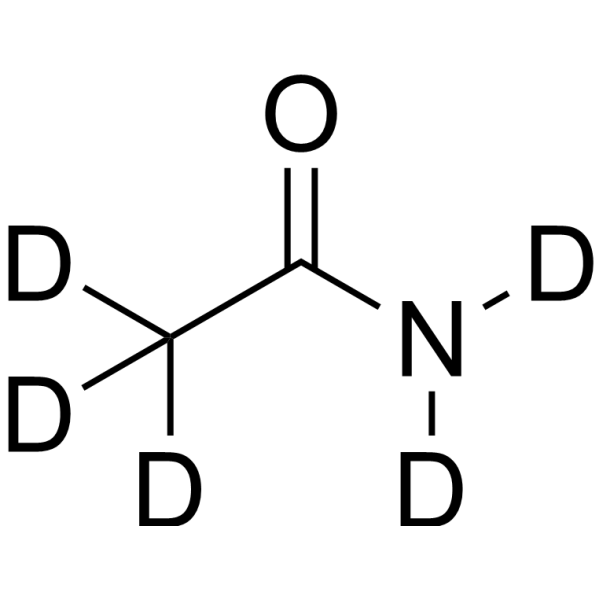
-
- HY-W243217
-
-

-
- HY-W016784S
-
|
|
Endogenous Metabolite
|
Others
|
|
Indole-3-acetamide-d5 is the deuterium labeled Indole-3-acetamide[1]. Indole-3-acetamide is a biosynthesis intermediate of indole-3-acetic acid (HY-18569). Indole-3-acetic acid is the most common natural plant growth hormone of the auxin class[2].
|
-
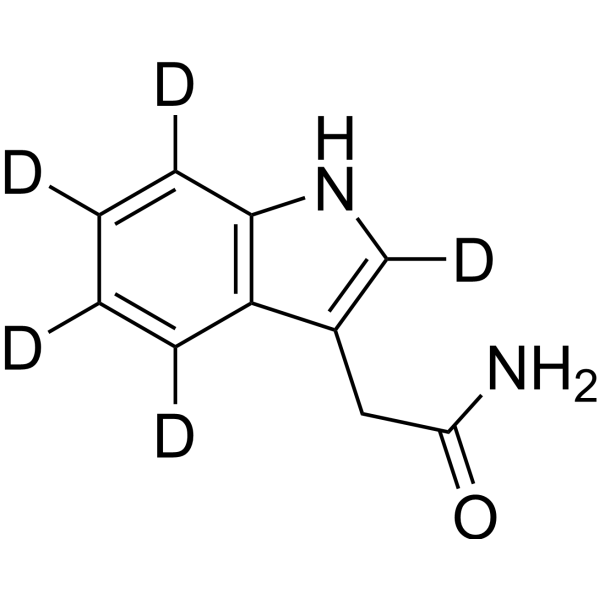
-
- HY-W016784
-
|
|
Endogenous Metabolite
|
Others
|
|
Indole-3-acetamide is a biosynthesis intermediate of indole-3-acetic acid (HY-18569). Indole-3-acetic acid is the most common natural plant growth hormone of the auxin class .
|
-

-
- HY-W087930S
-
-
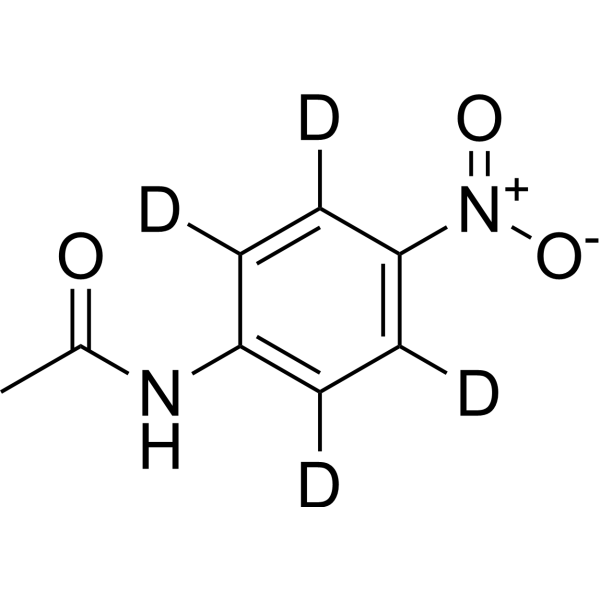
-
- HY-146712S
-
|
|
Isotope-Labeled Compounds
|
|
|
N-(4-Hydroxyphenyl)acetamide sulfate-d3 (sodium) is the deuterium labeled N-(4-Hydroxyphenyl)acetamide sulfate.
|
-
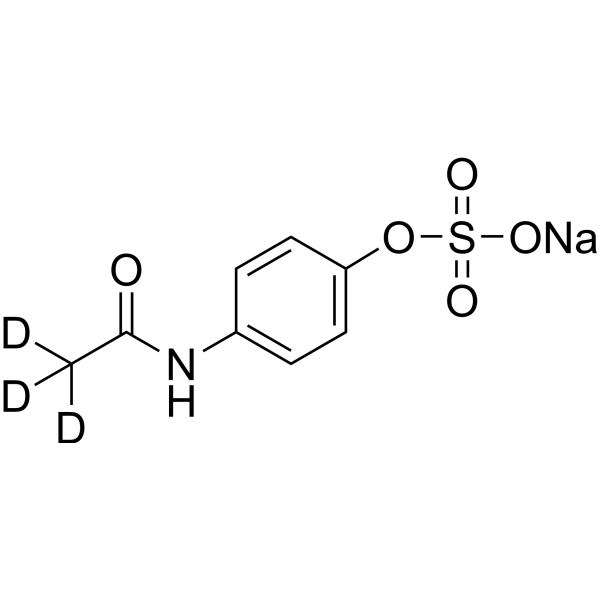
-
- HY-101403
-
-
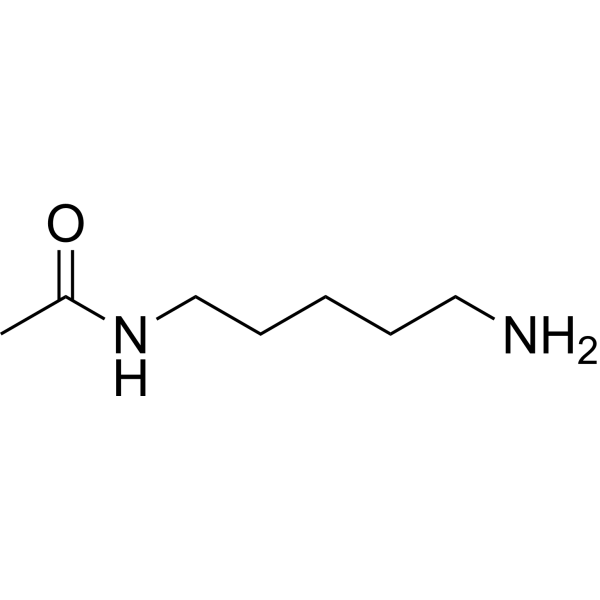
-
- HY-W164451
-
|
|
Fungal
|
Infection
|
|
N-(2-hydroxy-2-phenylethyl)acetamide is isolated from the solid rice cultures of the endophytic fungus Diaporthe eucalyptorum KY-9. N-(2-hydroxy-2-phenylethyl)acetamide exhibits antifungal activities against Alternaria solani .
|
-
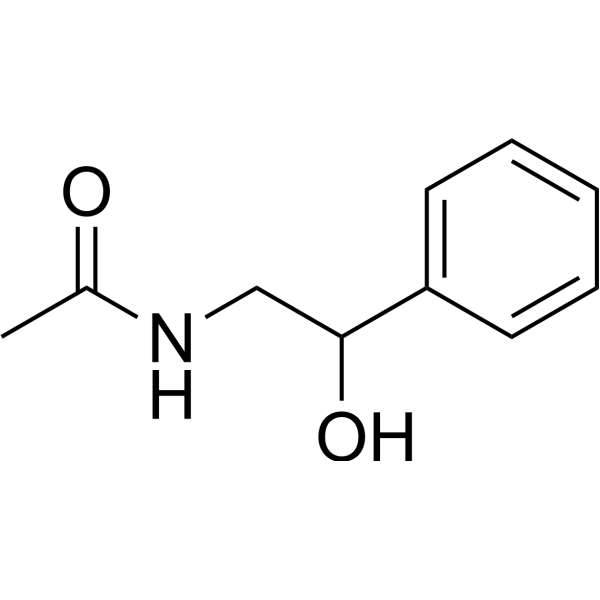
-
- HY-153263
-
|
|
Drug-Linker Conjugates for ADC
|
Cancer
|
|
(Aminooxy)acetamide-Val-Cit-PAB-MMAE (MMAE 5) is an intermediate used in the synthetic preparation of drug-linker conjugates for ADC. (Aminooxy)acetamide-Val-Cit-PAB-MMAE is conjugated to polyamide via oxime bond formation to form MMAE polyamide conjugate. Then MMAE polyamide conjugate can be conjugated to Trastuzumab, to make ADC .
|
-
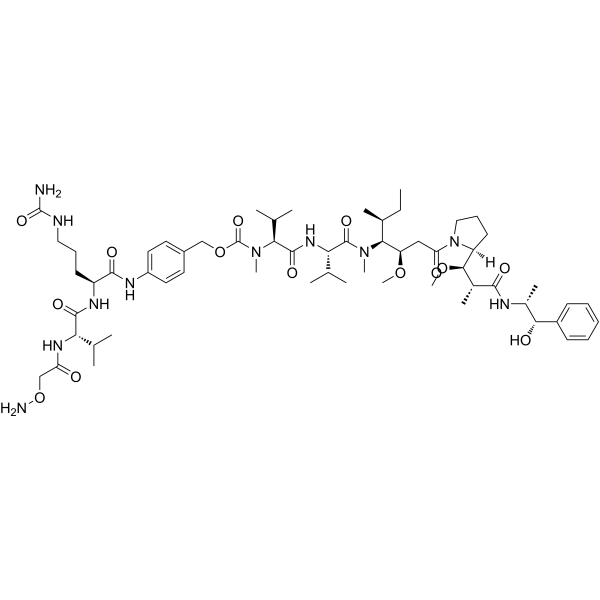
-
- HY-W140566S
-
-
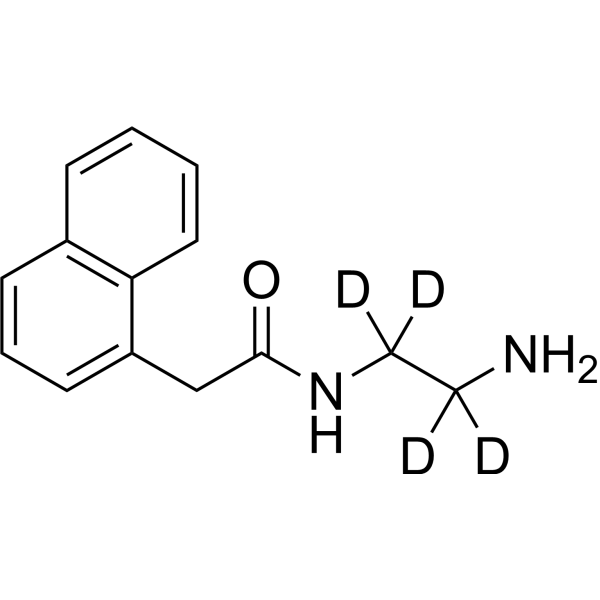
-
- HY-101424
-
|
|
Fungal
|
Infection
|
|
2-Chloro-N-(2-methyl-4-bromophenyl)acetamide is an antifungal compound .
|
-
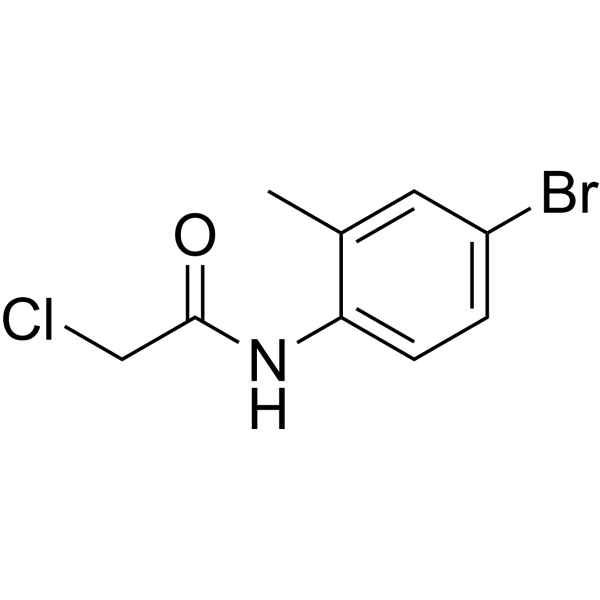
-
- HY-W009512S
-
|
|
Isotope-Labeled Compounds
|
Others
|
|
N-(2,6-Dimethylphenyl)-2-(piperazin-1-yl)acetamide-d8 is the deuterium labeled N-(2,6-Dimethylphenyl)-2-(piperazin-1-yl)acetamide[1].
|
-

-
- HY-106947
-
|
|
Endogenous Metabolite
|
Metabolic Disease
|
|
SY-640 is an Acetamide derivative and has potent hepatoprotective effect. SY-640 reduces Propionibacterium acnes and Lipopolysaccharide-induced liver injury in mice .
|
-
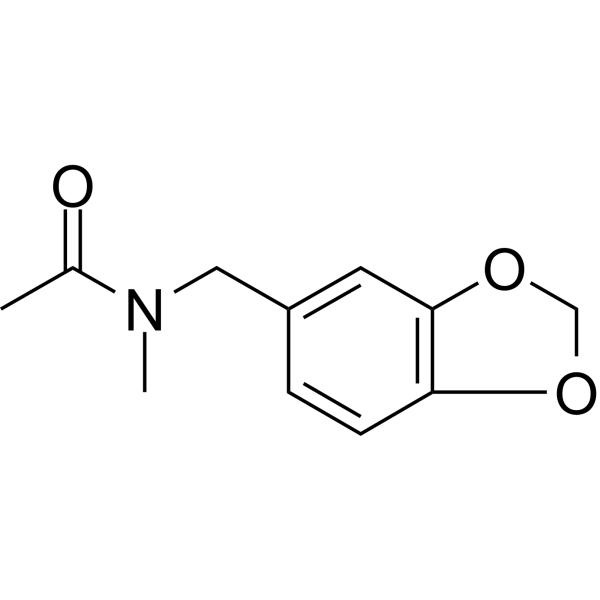
-
- HY-D0532
-
|
|
Fluorescent Dye
|
Others
|
|
N-[5-2-[Azo]phenyl]acetamide is a multifunctional dye. Dyes are important tools in biological experiments. They can help researchers observe and analyze cell structures, track biomolecules, evaluate cell functions, distinguish cell types, detect biomolecules, study tissue pathology and monitor microorganisms. Their applications range from basic scientific research to clinical A wide range of diagnostics. Dyes are also widely used in traditional fields such as textile dyeing, as well as in emerging fields such as functional textile processing, food pigments and dye-sensitized solar cells.
|
-
![N-[5-2-[Azo]phenyl]<em>acetamide</em>](//file.medchemexpress.com/product_pic/hy-d0532.gif)
-
- HY-136205
-
|
Iodoacetamide-alkyne; N-Hex-5-ynyl-2-iodo-acetamide
|
TRP Channel
|
Infection
Inflammation/Immunology
|
|
IA-Alkyne (Iodoacetamide-alkyne; N-Hex-5-ynyl-2-iodo-acetamide) is a TRP channel (TRPC) agonist and has the potential for the study of respiratory infection . IA-Alkyne can be used to develop an isotopically tagged probe for quantitative cysteine-reactivity profiling . IA-Alkyne is a click chemistry reagent, it contains an Alkyne group and can undergo copper-catalyzed azide-alkyne cycloaddition (CuAAc) with molecules containing Azide groups.
|
-
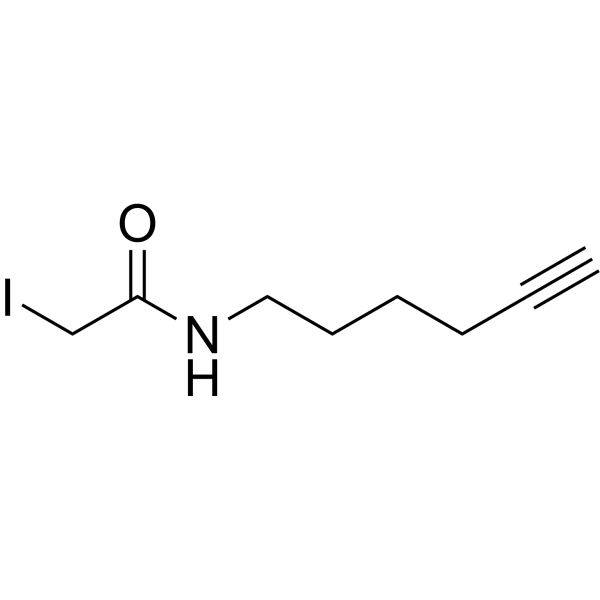
-
- HY-150408
-
|
|
AUTACs
|
Cancer
|
|
FBnG-(Cys-acetamide)-CH2-PEG3-CH2-CH2-CH2-NH2 is a linker of AUTAC4. AUTAC4 contains an p-fluorobenzylguanine (FBnG) and a phenylindole moiety, which can induce K63-linked polyubiquitination and degradation of mitochondria in HeLa cells .
|
-
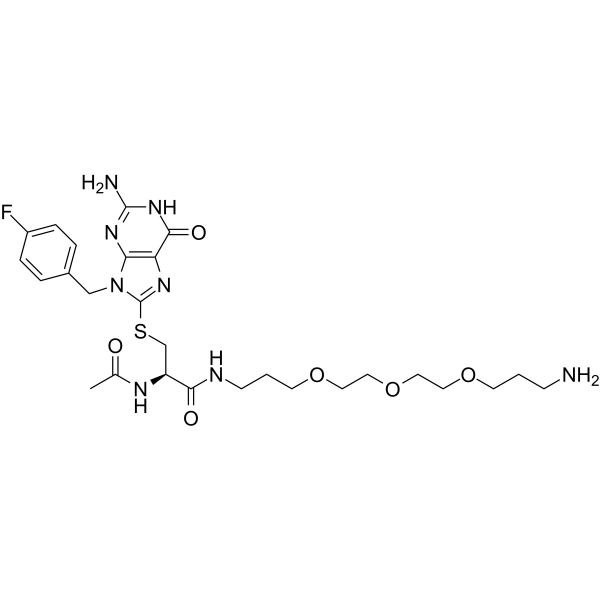
-
- HY-109573
-
|
|
Phospholipase
|
Cancer
|
|
hnps-PLA-IN-1 (compound 5aa), a indole-3-acetamide, is a hnps-PLA2 inhibitor (IC50=0.124 μM) .
|
-

-
- HY-18594
-
|
|
Others
|
Others
|
|
NSC-41589 is an N-[2-(methylsulfanyl) phenyl]acetamide.
|
-
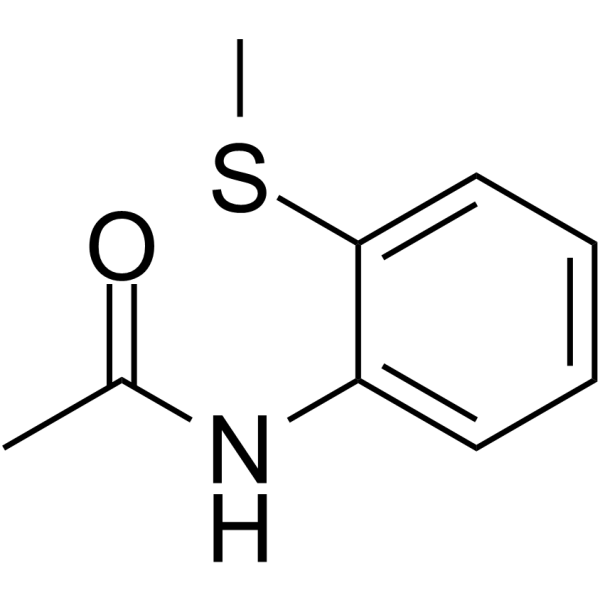
-
- HY-144426
-
|
|
Influenza Virus
|
Infection
|
|
Neuraminidase-IN-6 (Compound 5c) is a potent inhibitor of neuraminidase with an IC50 of 0.11 μM. Neuraminidase-IN-6 is a 1,3,4-triazole-3-acetamide derivative. Neuraminidase (NA) is an ideal target for the development of anti-influenza agents .
|
-
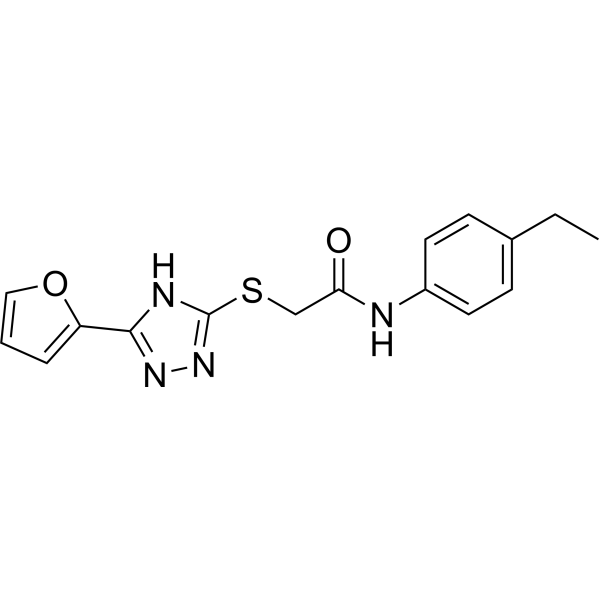
-
- HY-124175
-
|
|
Others
|
Endocrinology
|
|
16-Phenoxy prostaglandin F2α ethyl amide is a metabolically stable PGF2α analogue containing a acetamide structure .
|
-
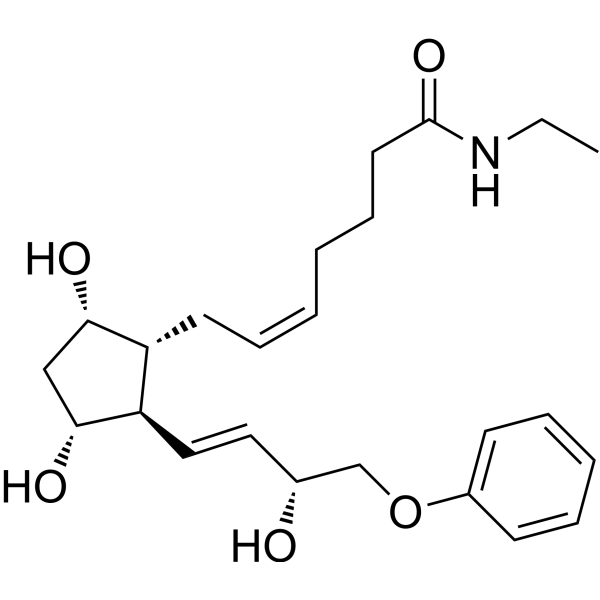
-
- HY-47876
-
|
|
Others
|
Others
|
|
2-(((Benzo[d][1,3]dioxol-5-ylmethylene)amino)oxy)-N-(m-tolyl)acetamide is an active molecule.
|
-

-
- HY-146373
-
|
|
Bacterial
|
Infection
|
|
The minimum inhibitory concentration (MIC) of a new 2- (quinoline-4-methoxy) acetamide antituberculotic agent against the reference strain of Mycobacterium tuberculosis H37Rv was as low as 0.3 μ M. It also inhibited the growth of Mycobacterium tuberculosis in the macrophage model of tuberculosis infection.
|
-

-
- HY-P4154
-
|
ALM-488
|
Fluorescent Dye
|
Neurological Disease
|
|
Bevonescein (ALM-488) is a novel, intravenously-administrated fluorescein-conjugated peptide that binds nerve-associated connective tissue, labels peripheral nerves under real-time fluorescence imaging (FL) in living mice and human ex vivo nerve tissue. Bevonescein is a peptide-linked tracer which fluorescently labeled both intact and degenerated nerves .
|
-
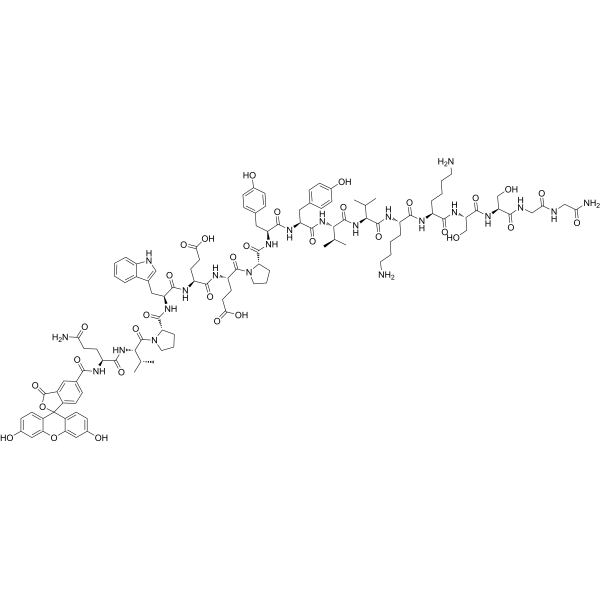
-
- HY-P1103A
-
|
|
CXCR
|
Cancer
|
|
CTCE-9908 TFA is a potent and selective CXCR4 antagonist. CTCE-9908 TFA induces mitotic catastrophe, cytotoxicity and inhibits migration in CXCR4-expressing ovarian cancer cells .
|
-
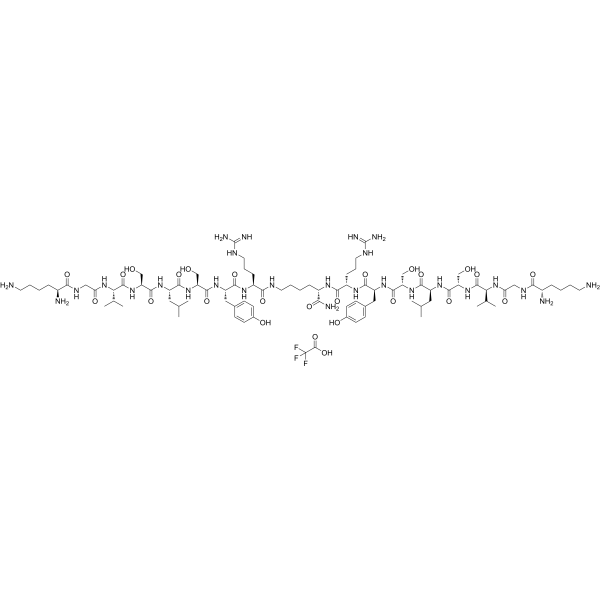
-
- HY-P1103
-
|
|
CXCR
|
Cancer
|
|
CTCE-9908 is a potent and selective CXCR4 antagonist. CTCE-9908 induces mitotic catastrophe, cytotoxicity and inhibits migration in CXCR4-expressing ovarian cancer cells .
|
-
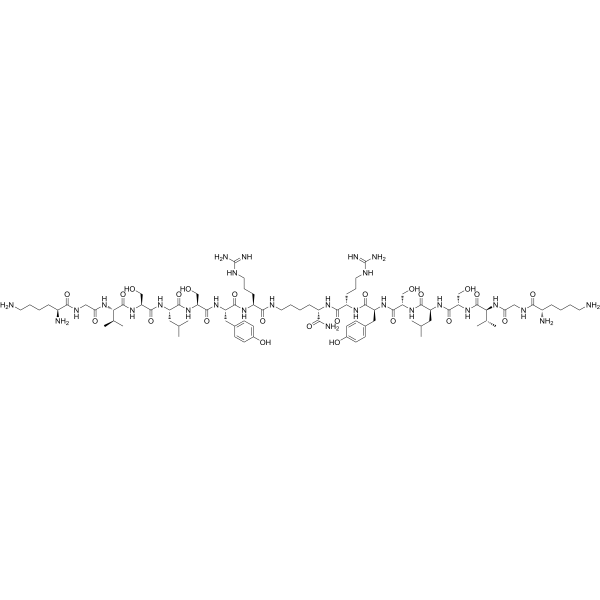
-
- HY-P2231A
-
|
MEDI0382 acetate
|
GCGR
|
Metabolic Disease
|
|
Cotadutide (MEDI0382) acetate is a potent dual agonist of glucagon-like peptide-1 (GLP-1) and GCGR with EC50 values of 6.9 pM and 10.2 pM, respectively. Cotadutide acetate exhibits ability to facilitate both weight loss and glycaemic control, and alleviate fibrosis. Cotadutide acetate can be used in the research of obesity and type 2 diabetes (T2D) .
|
-
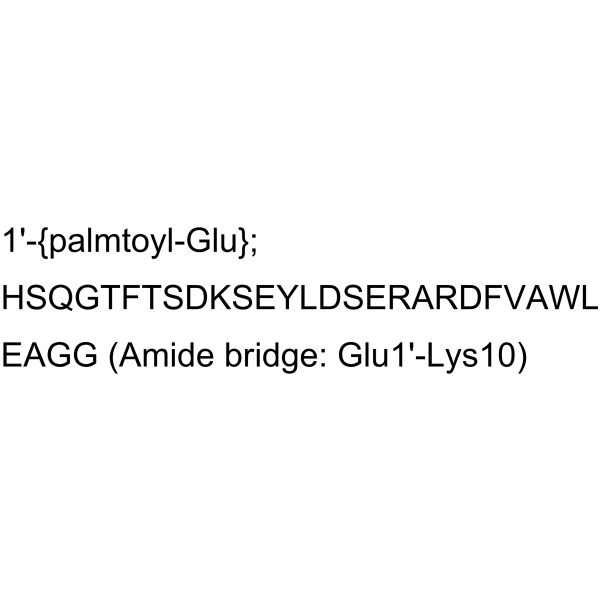
-
- HY-P2231
-
|
MEDI0382
|
GCGR
|
Metabolic Disease
|
|
Cotadutide (MEDI0382) is a potent dual agonist of glucagon-like peptide-1 (GLP-1) and GCGR with EC50 values of 6.9 pM and 10.2 pM, respectively. Cotadutide exhibits ability to facilitate both weight loss and glycaemic control, and alleviate fibrosis. Cotadutide can be used in the research of obesity and type 2 diabetes (T2D) .
|
-
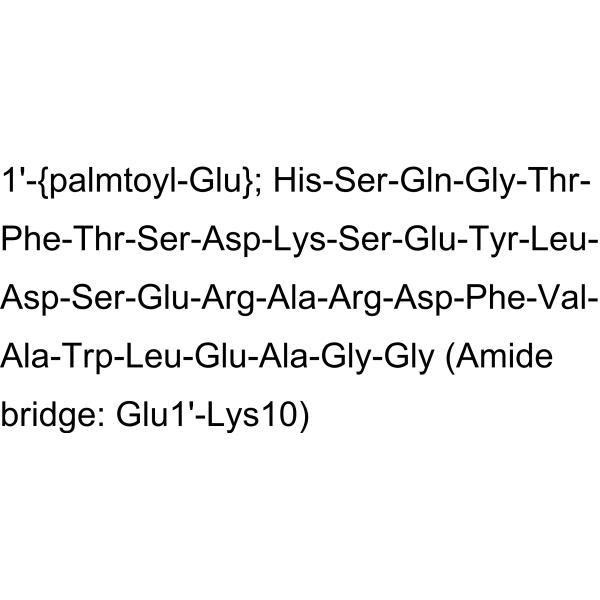
-
- HY-P1321
-
|
1229U91; GW1229
|
Neuropeptide Y Receptor
|
Neurological Disease
|
|
GR231118, an analogue of the C-terminus of neuropeptide Y, is a potent , competitive and relative seletive antagonist at human neuropeptide Y Y receptor with a pKi of 10.4. GR231118 a potent agonist at the human neuropeptide Y Y4 receptor (pEC50=8.6; pKi=9.6) and a weak agonist at the human and rat neuropeptide YY2 and Y5 receptors. GR231118 also has high affinity for the mouse neuropeptide Y Y6 receptor (pKi= 8.8) .
|
-
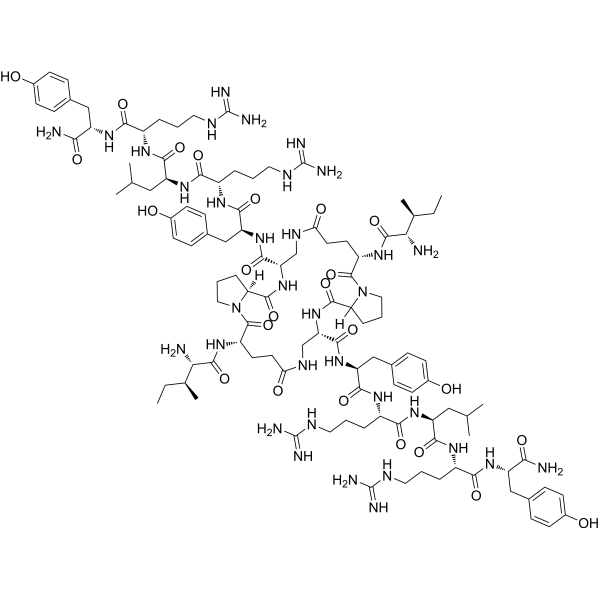
-
- HY-P1321A
-
|
1229U91 TFA; GW1229 TFA
|
Neuropeptide Y Receptor
|
Neurological Disease
|
|
GR231118 TFA, an analogue of the C-terminus of neuropeptide Y, is a potent , competitive and relative seletive antagonist at human neuropeptide YY receptor with a pKi of 10.4. GR231118 a potent agonist at the human neuropeptide YY4 receptor (pEC50=8.6; pKi=9.6) and a weak agonist at the human and rat neuropeptide Y Y2 and Y5 receptors. GR231118 also has high affinity for the mouse neuropeptide YY6 receptor (pKi= 8.8) .
|
-

| Cat. No. |
Product Name |
Type |
-
- HY-D0532
-
|
|
Dyes
|
|
N-[5-2-[Azo]phenyl]acetamide is a multifunctional dye. Dyes are important tools in biological experiments. They can help researchers observe and analyze cell structures, track biomolecules, evaluate cell functions, distinguish cell types, detect biomolecules, study tissue pathology and monitor microorganisms. Their applications range from basic scientific research to clinical A wide range of diagnostics. Dyes are also widely used in traditional fields such as textile dyeing, as well as in emerging fields such as functional textile processing, food pigments and dye-sensitized solar cells.
|
| Cat. No. |
Product Name |
Type |
-
- HY-157360
-
|
|
Microbial Culture
|
|
Acetamide Agar is a solid culture media for non-fermenting bacteria. Acetamide Agar helps differentiate P. acidovorans from other non-sugar-soluble or weakly sugar-soluble Pseudomonas species. Acetamide Agar can be used to test the ability of microorganisms such as Pseudomonas aeruginosa to utilize acetamide through deamination .
|
| Cat. No. |
Product Name |
Target |
Research Area |
-
- HY-P4154
-
|
ALM-488
|
Fluorescent Dye
|
Neurological Disease
|
|
Bevonescein (ALM-488) is a novel, intravenously-administrated fluorescein-conjugated peptide that binds nerve-associated connective tissue, labels peripheral nerves under real-time fluorescence imaging (FL) in living mice and human ex vivo nerve tissue. Bevonescein is a peptide-linked tracer which fluorescently labeled both intact and degenerated nerves .
|
-
- HY-P1103
-
|
|
CXCR
|
Cancer
|
|
CTCE-9908 is a potent and selective CXCR4 antagonist. CTCE-9908 induces mitotic catastrophe, cytotoxicity and inhibits migration in CXCR4-expressing ovarian cancer cells .
|
-
- HY-P2231A
-
|
MEDI0382 acetate
|
GCGR
|
Metabolic Disease
|
|
Cotadutide (MEDI0382) acetate is a potent dual agonist of glucagon-like peptide-1 (GLP-1) and GCGR with EC50 values of 6.9 pM and 10.2 pM, respectively. Cotadutide acetate exhibits ability to facilitate both weight loss and glycaemic control, and alleviate fibrosis. Cotadutide acetate can be used in the research of obesity and type 2 diabetes (T2D) .
|
-
- HY-P1103A
-
|
|
CXCR
|
Cancer
|
|
CTCE-9908 TFA is a potent and selective CXCR4 antagonist. CTCE-9908 TFA induces mitotic catastrophe, cytotoxicity and inhibits migration in CXCR4-expressing ovarian cancer cells .
|
-
- HY-P2231
-
|
MEDI0382
|
GCGR
|
Metabolic Disease
|
|
Cotadutide (MEDI0382) is a potent dual agonist of glucagon-like peptide-1 (GLP-1) and GCGR with EC50 values of 6.9 pM and 10.2 pM, respectively. Cotadutide exhibits ability to facilitate both weight loss and glycaemic control, and alleviate fibrosis. Cotadutide can be used in the research of obesity and type 2 diabetes (T2D) .
|
-
- HY-P4757
-
|
|
Peptides
|
Others
|
|
N1-Glutathionyl-spermidine disulfide is a substrate of trypanothione reductase .
|
-
- HY-P10026
-
|
LY-3457263
|
Peptides
|
Metabolic Disease
|
|
Nisotirotide (LY-3457263) is a PYY analog agonist studied in type 2 diabetes and obesity .
|
-
- HY-P1321
-
|
1229U91; GW1229
|
Neuropeptide Y Receptor
|
Neurological Disease
|
|
GR231118, an analogue of the C-terminus of neuropeptide Y, is a potent , competitive and relative seletive antagonist at human neuropeptide Y Y receptor with a pKi of 10.4. GR231118 a potent agonist at the human neuropeptide Y Y4 receptor (pEC50=8.6; pKi=9.6) and a weak agonist at the human and rat neuropeptide YY2 and Y5 receptors. GR231118 also has high affinity for the mouse neuropeptide Y Y6 receptor (pKi= 8.8) .
|
-
- HY-P1321A
-
|
1229U91 TFA; GW1229 TFA
|
Neuropeptide Y Receptor
|
Neurological Disease
|
|
GR231118 TFA, an analogue of the C-terminus of neuropeptide Y, is a potent , competitive and relative seletive antagonist at human neuropeptide YY receptor with a pKi of 10.4. GR231118 a potent agonist at the human neuropeptide YY4 receptor (pEC50=8.6; pKi=9.6) and a weak agonist at the human and rat neuropeptide Y Y2 and Y5 receptors. GR231118 also has high affinity for the mouse neuropeptide YY6 receptor (pKi= 8.8) .
|
-
- HY-P10016
-
|
HS-20039; EPO-018B
|
Peptides
|
Endocrinology
|
|
Pegmolesatide(HS-20039; EPO-018B) a synthetic peptide-based erythropoiesis-stimulating agent, can be used for ??the study of anemia in chronic kidney disease .
|
| Cat. No. |
Product Name |
Category |
Target |
Chemical Structure |
| Cat. No. |
Product Name |
Chemical Structure |
-
- HY-Y0946S
-
|
|
|
Acetamide- 15N is the 15N-labeled Acetamide. Acetamide is used as an intermediate in the synthesis of methylamine, thioacetamide, and insecticides, and as a plasticizer in leather, cloth and coatings. Acetamide has carcinogenicity[1][2].
|
-

-
- HY-W016784S
-
|
|
|
Indole-3-acetamide-d5 is the deuterium labeled Indole-3-acetamide[1]. Indole-3-acetamide is a biosynthesis intermediate of indole-3-acetic acid (HY-18569). Indole-3-acetic acid is the most common natural plant growth hormone of the auxin class[2].
|
-

-
- HY-Y0946S2
-
|
|
|
Acetamide-d5 is the deuterium labeled Acetamide[1]. Acetamide is used as an intermediate in the synthesis of methylamine, thioacetamide, and insecticides, and as a plasticizer in leather, cloth and coatings. Acetamide has carcinogenicity[2][3].
|
-

-
- HY-W243217
-
|
|
|
Acetamide-2,2,2-d3 is the deuterium labeled Acetamide-2,2,2-d3[1].
|
-

-
- HY-W087930S
-
|
|
|
N-(4-Nitrophenyl)acetamide-d4 is the deuterium labeled N-(4-Nitrophenyl)acetamide[1].
|
-

-
- HY-146712S
-
|
|
|
N-(4-Hydroxyphenyl)acetamide sulfate-d3 (sodium) is the deuterium labeled N-(4-Hydroxyphenyl)acetamide sulfate.
|
-

-
- HY-W140566S
-
|
|
|
N-(2-Aminoethyl)-2-(naphthalen-1-yl)acetamide-d4 is deuterium labeled N-(2-Aminoethyl)-2-(naphthalen-1-yl)acetamide.
|
-

-
- HY-W009512S
-
|
|
|
N-(2,6-Dimethylphenyl)-2-(piperazin-1-yl)acetamide-d8 is the deuterium labeled N-(2,6-Dimethylphenyl)-2-(piperazin-1-yl)acetamide[1].
|
-

| Cat. No. |
Product Name |
|
Classification |
-
- HY-136205
-
|
Iodoacetamide-alkyne; N-Hex-5-ynyl-2-iodo-acetamide
|
|
Alkynes
|
|
IA-Alkyne (Iodoacetamide-alkyne; N-Hex-5-ynyl-2-iodo-acetamide) is a TRP channel (TRPC) agonist and has the potential for the study of respiratory infection . IA-Alkyne can be used to develop an isotopically tagged probe for quantitative cysteine-reactivity profiling . IA-Alkyne is a click chemistry reagent, it contains an Alkyne group and can undergo copper-catalyzed azide-alkyne cycloaddition (CuAAc) with molecules containing Azide groups.
|
Your information is safe with us. * Required Fields.
Inquiry Information
- Product Name:
- Cat. No.:
- Quantity:
- MCE Japan Authorized Agent:






















![N-[5-2-[Azo]phenyl]<em>acetamide</em>](http://file.medchemexpress.com/product_pic/hy-d0532.gif)

















